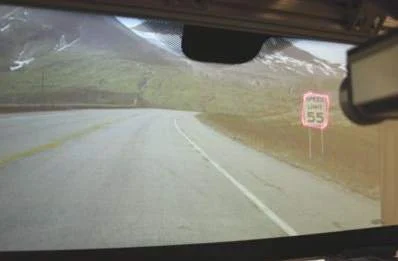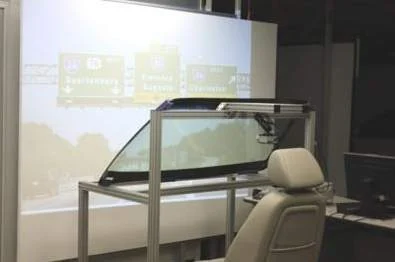General Motors (GM) is developing a HUD (Head-Up Display) system to project images generated by compact ultra violet lasers directly onto the windshield of a vehicle.
“We’re looking to create enhanced vision systems,” explained GM group lab manager Thomas Seder.

“Let’s say you’re driving in fog, we could use the vehicle’s infrared cameras to identify where the edge of the road is and the lasers could ‘paint’ the edge of the road onto the windshield so the driver knows where the edge of the road is.”
According to Seder, enhanced vision systems are a modern “take” on HUD technology that GM first marketed in 1988. However, scientists at GM and various universities are now developing next-generation head-up systems that could transform the everyday windshield into a HUD device.
Although the full windshield head-up system has not yet been chosen for a specific GM car, Seder says some of the supporting technologies could end up in GM vehicles in the near-term future.
For example, a vehicle’s entire windshield could be transformed into a large area transparent display simply by coating it with a series of transparent phosphors which emit visible light when “excited” by a light beam from a compact laser.
“On [a] foggy day, maybe worsened by sleet or snow, the enhanced vision system could combine night vision with the head-up system to identify and highlight the precise location of animals roaming along the side of the road that could have avoided recognition with the naked eye.

“This design is superior to traditional head down display-based night vision systems, which require a user to read information from a traditional display, create a mental model and imagine the threat’s precise location in space.”
Seder added that the HUD system can be combined with automated sign reading technology, similar to the current Opel Eye system which alerts the driver of impending construction and changing speeds.
Additionally, the system is also capable of using navigation system data to alert the driver of a desired exit by reading overhead traffic signs.
“We have done testing on a number of drivers and their performance is better relative to head-down systems that are commonly used in vehicles today,” Seder said. ”It’s a compelling design.”






